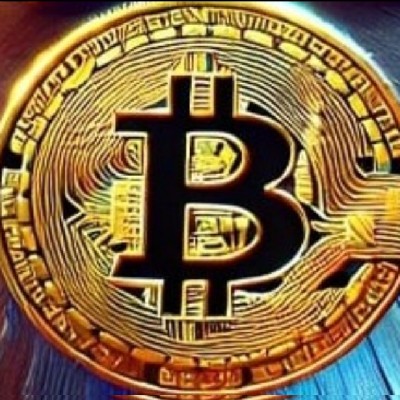Shardeum ($SHM): A Trader's Paradise or Long-Term Opportunity?*
$SHM , a scalable and EVM-compatible Layer 1 blockchain, has garnered significant attention for its innovative technology and strong narrative. However, the question remains: Is $SHM still an early gem or has it become overhyped?
*Key Considerations*
1. *Narrative and Expectations*: Shardeum's powerful narrative has sparked high expectations, potentially leading to trader-driven volatility.
2. *Price Action vs. Fundamentals*: $SHM price action reflects speculation rather than adoption metrics, creating opportunities for short-term traders.
3. *Ecosystem Growth*: Shardeum's ecosystem is building steadily, but slowly, offering opportunities for news-based trading and tactical positions.
4. *Unlock Schedules and Volatility*: Scheduled unlocks can create predictable selling pressure, driving short-term dips and offering trading opportunities.
*Trading Opportunities*
- News-based trading on partnerships and milestones
- Sell-the-news events
- Pump-and-dump patterns around token unlocks
*Conclusion*
Shardeum offers volatility, liquidity, and attention, making it a potential playground for skilled traders. However, it's essential to distinguish between momentum and conviction, knowing when to ride the waves and when to exit.
“XRP Didn’t Come This Far Just to Crash Again” — Why One OG Believes $11 Is Only the Beginning
After over a decade of battling regulators, surviving delistings, and outlasting market cycles, XRP is once again in the spotlight, and this time, the conviction is different.
A well-known OG XRP investor recently made waves online, boldly declaring:
“XRP didn’t come all this way just to go back down to $0.60.”
He’s not alone. Across crypto forums and X (Twitter), a growing number of analysts are eyeing $11.34 as the next major target, a nearly 15x surge from current levels.
So what’s fueling this renewed belief in XRP?
🔥 The Battle-Tested Comeback Narrative
Let’s face it, XRP has been through it all:
SEC lawsuit
Delistings from top CEXs
Years of sideways action
But unlike many altcoins that faded into obscurity, XRP didn’t die. It adapted. It survived. And now it’s positioned for a possible breakout just as regulators, institutions, and real-world utility are becoming key narratives in crypto.
In short: XRP has already proven it can take the punches. Now it’s swinging back.
📈 Why Analysts Are Eyeing $11.34
The $11.34 price target isn’t random. According to market strategists, here’s why this level makes sense:
It aligns with historical Fibonacci extensions from previous macro cycles.
XRP’s 2021 rally hit $1.96, and a move to $11.34 would match historical percentage moves.
Ripple's ongoing global expansion (especially in Asia and the Middle East) is fueling speculation of large-scale adoption.
One technical analyst recently tweeted:
“$XRP is one major volume candle away from going parabolic. The $11 level is not only possible, it’s overdue.”
🌍 XRP’s Global Utility Narrative Strengthens
While other coins fight for narrative, Ripple Labs is quietly executing:
Expanding ODL (On-Demand Liquidity) corridors
Establishing real-world partnerships with banks and payment providers
Leading the charge in CBDC pilot programs
This isn't just hype, it's infrastructure.
In a post-ETF crypto world, institutional-grade assets with utility are set to shine. XRP is checking all the boxes, especially as regulation clarity slowly emerges.
🧠 Market Psychology: From Doubt to Determination
The sentiment shift is palpable. The same holders who were once mocked as “XRP Army” are now being taken seriously. And their resilience is becoming part of the coin’s identity.
It’s no longer about hoping for $3 again. It’s about $10+ as the new mental anchor.
As the OG investor stated:
“This isn’t hopium. This is momentum. We’ve waited a decade. It’s time.”
🎯 So What’s the Play?
If XRP continues holding key support levels while Bitcoin consolidates, we may see the perfect storm:
🔓 Regulatory relief
🌍 Utility narrative expansion
🐋 Institutional accumulation
🧠 Retail FOMO once it breaks past $2.00
This could be the last “boring” phase before XRP joins the altseason fireworks.
Conclusion
$11.34 might sound crazy to some, but for those who’ve held through the darkest days, it’s not a fantasy, it’s validation. XRP didn’t come all this way to stall at $0.60. The community knows it. The charts are aligning. And history often favors the persistent.
If XRP breaks out again, don’t say they didn’t warn you.
Disclaimer: This article is for informational purposes only and does not constitute financial advice. Cryptocurrency investments carry a high level of risk and volatility. Always conduct your own research (DYOR) and consult a professional financial advisor before making any investment decisions.
Ripple and Trump Take the Middle East by Storm: Blockchain Innovation Meets High-Level Diplomacy
Ripple Labs is rapidly expanding its influence across the Middle East , highlighted by a major engagement with UAE officials during the Dubai Fintech Summit on May 14, 2025. Led by President Monica Long, Ripple’s delegation discussed advancing digital payment infrastructure and driving financial innovation throughout the region.
The Middle East now represents 20% of Ripple’s global customer base , a significant rise since the company established its Dubai office in 2020. In 2024, Ripple further strengthened its presence through a landmark partnership with the Dubai International Financial Centre (DIFC) Innovation Hub. This collaboration focuses on promoting blockchain adoption and supporting early-stage startups in the region.
Adding to its success, Ripple secured its first license from the Dubai Financial Services Authority (DFSA), allowing it to offer regulated cross-border payment services via its Ripple Payments platform. This move grants Ripple access to the UAE’s massive $400 billion trade market and promotes the use of its RLUSD stablecoin for secure, fast, and cost-efficient transactions.
While Ripple focused on financial innovation, President Donald Trump’s latest diplomatic tour made waves across the region. Starting in Saudi Arabia, Trump met with Crown Prince Mohammed bin Salman, resulting in a strategic economic partnership that includes a massive $142 billion defense agreement. In a groundbreaking political move, Trump also announced the lifting of U.S. sanctions on Syria and held a historic meeting with Syria's interim President Ahmad al-Sharaa. This meeting is seen as a step toward expanding the Abraham Accords and normalizing relations between Syria and Israel.
In Qatar, Trump continued his high-profile diplomacy by finalizing an unprecedented $1.2 trillion commercial deal. This includes a historic order from Qatar Airways to purchase 160 Boeing jets, the largest in the company’s history. The agreements also involve major investments in U.S. companies such as GE Aerospace, further solidifying America’s economic ties with the Gulf region.
Accompanying President Trump were several of America’s most influential business figures, including Elon Musk, Sam Altman, and CEOs from Google, OpenAI, Nvidia, Uber, BlackRock, and Blackstone . Their presence underscores the administration’s focus on strengthening U.S.-Middle East economic partnerships, particularly in sectors like artificial intelligence, defense technology, and financial services.
This business-focused delegation highlights a growing trend of direct collaboration between U.S. private sector giants and Middle Eastern governments, paving the way for large-scale investments and technological advancements in the region.
Despite the positive economic outlook, Trump’s diplomatic tour has raised ethical concerns. Critics have pointed to potential conflicts of interest related to the Trump family’s ongoing business dealings in the region . Some fear that personal business ambitions may be intertwined with official U.S. foreign policy efforts.
Additionally, while economic and diplomatic ties appear stronger than ever, ongoing regional tensions—especially the unresolved conflict in Gaza—remain a critical issue. Despite these challenges, the Middle East is emerging as a central stage for both blockchain innovation and high-level diplomatic strategy, with the U.S. playing a key role in shaping the region’s future.
Ripple Labs is rapidly expanding its influence across the Middle East , highlighted by a major engagement with UAE officials during the Dubai Fintech Summit on May 14, 2025. Led by President Monica Long, Ripple’s delegation discussed advancing digital payment infrastructure and driving financial innovation throughout the region.
The Middle East now represents 20% of Ripple’s global customer base , a significant rise since the company established its Dubai office in 2020. In 2024, Ripple further strengthened its presence through a landmark partnership with the Dubai International Financial Centre (DIFC) Innovation Hub. This collaboration focuses on promoting blockchain adoption and supporting early-stage startups in the region.
Adding to its success, Ripple secured its first license from the Dubai Financial Services Authority (DFSA), allowing it to offer regulated cross-border payment services via its Ripple Payments platform. This move grants Ripple access to the UAE’s massive $400 billion trade market and promotes the use of its RLUSD stablecoin for secure, fast, and cost-efficient transactions.
While Ripple focused on financial innovation, President Donald Trump’s latest diplomatic tour made waves across the region. Starting in Saudi Arabia, Trump met with Crown Prince Mohammed bin Salman, resulting in a strategic economic partnership that includes a massive $142 billion defense agreement. In a groundbreaking political move, Trump also announced the lifting of U.S. sanctions on Syria and held a historic meeting with Syria's interim President Ahmad al-Sharaa. This meeting is seen as a step toward expanding the Abraham Accords and normalizing relations between Syria and Israel.
In Qatar, Trump continued his high-profile diplomacy by finalizing an unprecedented $1.2 trillion commercial deal. This includes a historic order from Qatar Airways to purchase 160 Boeing jets, the largest in the company’s history. The agreements also involve major investments in U.S. companies such as GE Aerospace, further solidifying America’s economic ties with the Gulf region.
Accompanying President Trump were several of America’s most influential business figures, including Elon Musk, Sam Altman, and CEOs from Google, OpenAI, Nvidia, Uber, BlackRock, and Blackstone . Their presence underscores the administration’s focus on strengthening U.S.-Middle East economic partnerships, particularly in sectors like artificial intelligence, defense technology, and financial services.
This business-focused delegation highlights a growing trend of direct collaboration between U.S. private sector giants and Middle Eastern governments, paving the way for large-scale investments and technological advancements in the region.
Despite the positive economic outlook, Trump’s diplomatic tour has raised ethical concerns. Critics have pointed to potential conflicts of interest related to the Trump family’s ongoing business dealings in the region . Some fear that personal business ambitions may be intertwined with official U.S. foreign policy efforts.
Additionally, while economic and diplomatic ties appear stronger than ever, ongoing regional tensions—especially the unresolved conflict in Gaza—remain a critical issue. Despite these challenges, the Middle East is emerging as a central stage for both blockchain innovation and high-level diplomatic strategy, with the U.S. playing a key role in shaping the region’s future.
Mastering $SHM Trading on Bitget: Advanced Strategies for Maximizing Returns
With the rise of decentralized finance and next-generation blockchain ecosystems, $SHM has emerged as a promising digital asset gaining traction among crypto traders. As it becomes increasingly available on major exchanges like Bitget, the opportunity to capitalize on $SHM’s volatility and momentum has never been greater. In this article, we present a comprehensive, advanced-level guide to mastering $SHM trading on Bitget—designed for serious traders looking to refine their approach and maximize returns.
Why Trade $SHM on Bitget?
Bitget has quickly become a preferred platform for both novice and experienced traders due to its deep liquidity, competitive fees, and advanced trading tools. For $SHM traders, Bitget offers:
Spot and futures trading options
Leveraged trading with risk control tools
Integrated copy trading for passive strategy exposure
Strong security infrastructure and user-friendly interface
This makes Bitget a powerful environment for implementing strategic, data-informed trading approaches.
Strategy 1: Trend Trading with Confirmation
One of the most effective approaches for $SHM is trend trading, which involves identifying and riding the coin’s momentum:
Identify the trend: Use indicators such as the 50-day and 200-day moving averages (MA). A bullish crossover (e.g., 50-MA crossing above 200-MA) may indicate a long opportunity.
Confirm with RSI and MACD: An RSI in the 55–70 range alongside a MACD bullish crossover can strengthen the buy signal.
Entry and exit: Enter near breakout zones after confirmation, and place stop-loss orders just below the most recent swing low.
Strategy 2: Scalping in High Volatility Conditions
$SHM's trading volume can spike dramatically, offering ideal conditions for scalping, a strategy that aims to capture small price movements:
Setup: Use 1-minute or 5-minute charts with Bollinger Bands and volume indicators.
Execution: Buy at lower Bollinger Bands and sell near upper bands, especially during volume surges.
Tools: Bitget’s low latency and limit order functions are crucial for scalping efficiency.
Scalping demands discipline and fast reaction times, but when executed correctly, it can yield consistent short-term profits.
Strategy 3: Trading the News and Sentiment Waves
$SHM’s price is highly responsive to ecosystem updates, exchange listings, and community developments. Traders can benefit by:
Monitoring News & Social Signals: Stay active on platforms like X (Twitter), Discord, and CoinMarketCal to anticipate sentiment shifts.
Entering before FOMO peaks: When positive news begins trending but before parabolic moves, enter early and exit in stages.
Caution on reversals: Use trailing stop-losses during hype-driven rallies to protect gains.
Strategy 4: Hedging with Futures
To mitigate downside risk or amplify profits, advanced traders use futures contracts:
Hedging long-term holdings: Open short futures positions to protect spot investments during anticipated dips.
Leverage with caution: Bitget allows leverage, but responsible use is essential. Small position sizes with tight stop-losses are recommended.
Funding rate strategy: Take advantage of funding rate differentials to earn passive gains when sentiment is extreme.
Risk Management and Best Practices
Regardless of strategy, capital protection remains the cornerstone of profitable trading:
Risk only 1–2% of capital per trade
Use stop-loss orders consistently
Avoid overtrading and emotional decisions
Maintain a trading journal to review and refine strategies
Bitget’s charting tools and mobile alerts can help enforce discipline and keep strategies on track.
Conclusion
Trading $SHM on Bitget offers exciting opportunities for those who approach the market with strategy, discipline, and data. Whether trend-following, scalping, or trading the news, mastering these advanced techniques can significantly enhance your returns. As always, integrating sound risk management and continuous learning will remain essential in staying ahead of the market.
With $SHM's continued development and Bitget's robust platform, the path to smart, profitable trading is open to those prepared to seize it.
$SHM
Expert Analysis: Trading $RDAC on Bitget – Strategies and Market Insights 📊
Trading $RDAC on Bitget
Expert Analysis: Trading $RDAC on Bitget – Strategies and Market Insights 📊
Trading $RDAC on Bitget requires a deep understanding of market trends, technical analysis, and risk management. Here's an expert analysis to help you navigate the market:
Market Insights 🌟
- *Current Price*: $RDAC's current price is $X, with a market capitalization of $Y.
- *Market Sentiment*: The market sentiment is bullish/bearish, with a Fear & Greed Index score of Z.
- *Trading Volume*: The trading volume is high/low, indicating strong/weak market interest.
Trading Strategies 📈
- *Day Trading*: Take advantage of short-term price movements using technical indicators like RSI, MACD, and Bollinger Bands.
- *Swing Trading*: Hold positions for longer periods, riding market trends and waves.
- *Scalping*: Make multiple small trades, taking advantage of small price movements.
Risk Management 🚨
- *Stop-Loss Orders*: Set stop-loss orders to limit potential losses.
- *Position Sizing*: Manage your position size to minimize risk.
- *Diversification*: Diversify your portfolio to reduce risk.
Bitget Features 🌟
- *Leverage*: Bitget offers leverage trading, allowing you to amplify your potential gains.
- *Advanced Charting*: Utilize Bitget's advanced charting tools to analyze market trends.
- *Security*: Ensure your account is secure with two-factor authentication and other safety measures.
Conclusion 📊
Trading $RDAC on Bitget requires a combination of technical analysis, risk management, and market insights. By following these strategies and staying informed, you can make more informed trading decisions and potentially achieve success in the market.


 最低価格
最低価格 最高価格
最高価格 


















Wavesのソーシャルデータ
直近24時間では、Wavesのソーシャルメディアセンチメントスコアは3.7で、Wavesの価格トレンドに対するソーシャルメディアセンチメントは強気でした。全体的なWavesのソーシャルメディアスコアは6,835で、全暗号資産の中で187にランクされました。
LunarCrushによると、過去24時間で、暗号資産は合計1,058,120回ソーシャルメディア上で言及され、Wavesは0.02%の頻度比率で言及され、全暗号資産の中で283にランクされました。
過去24時間で、合計85人のユニークユーザーがWavesについて議論し、Wavesの言及は合計188件です。しかし、前の24時間と比較すると、ユニークユーザー数は減少で21%、言及総数は増加で165%増加しています。
X(Twitter)では、過去24時間に合計7件のWavesに言及したポストがありました。その中で、71%はWavesに強気、0%はWavesに弱気、29%はWavesに中立です。
Redditでは、過去24時間にWavesに言及した0件の投稿がありました。直近の24時間と比較して、Wavesの言及数が100%減少しました。
すべてのソーシャル概要
3.7